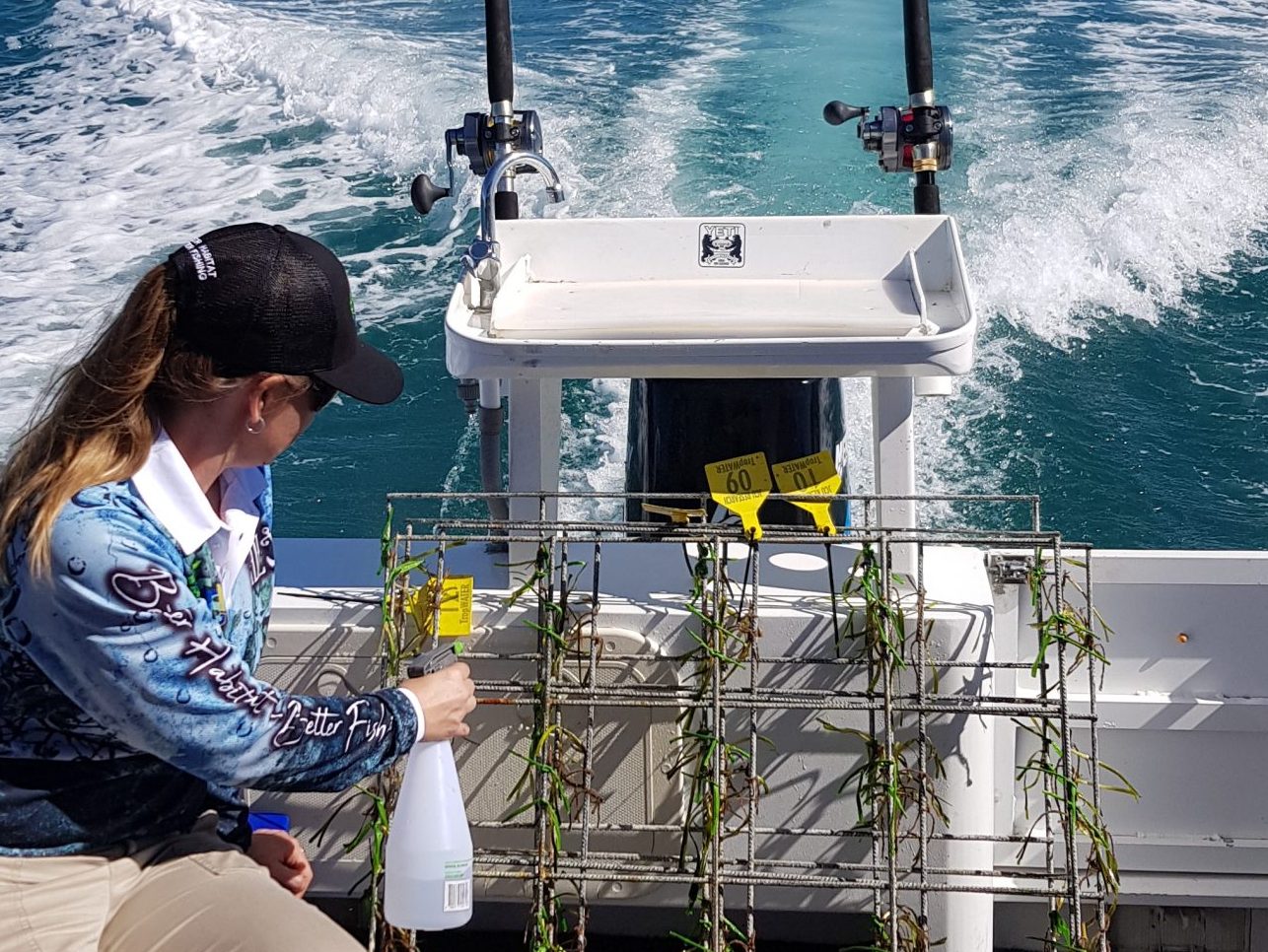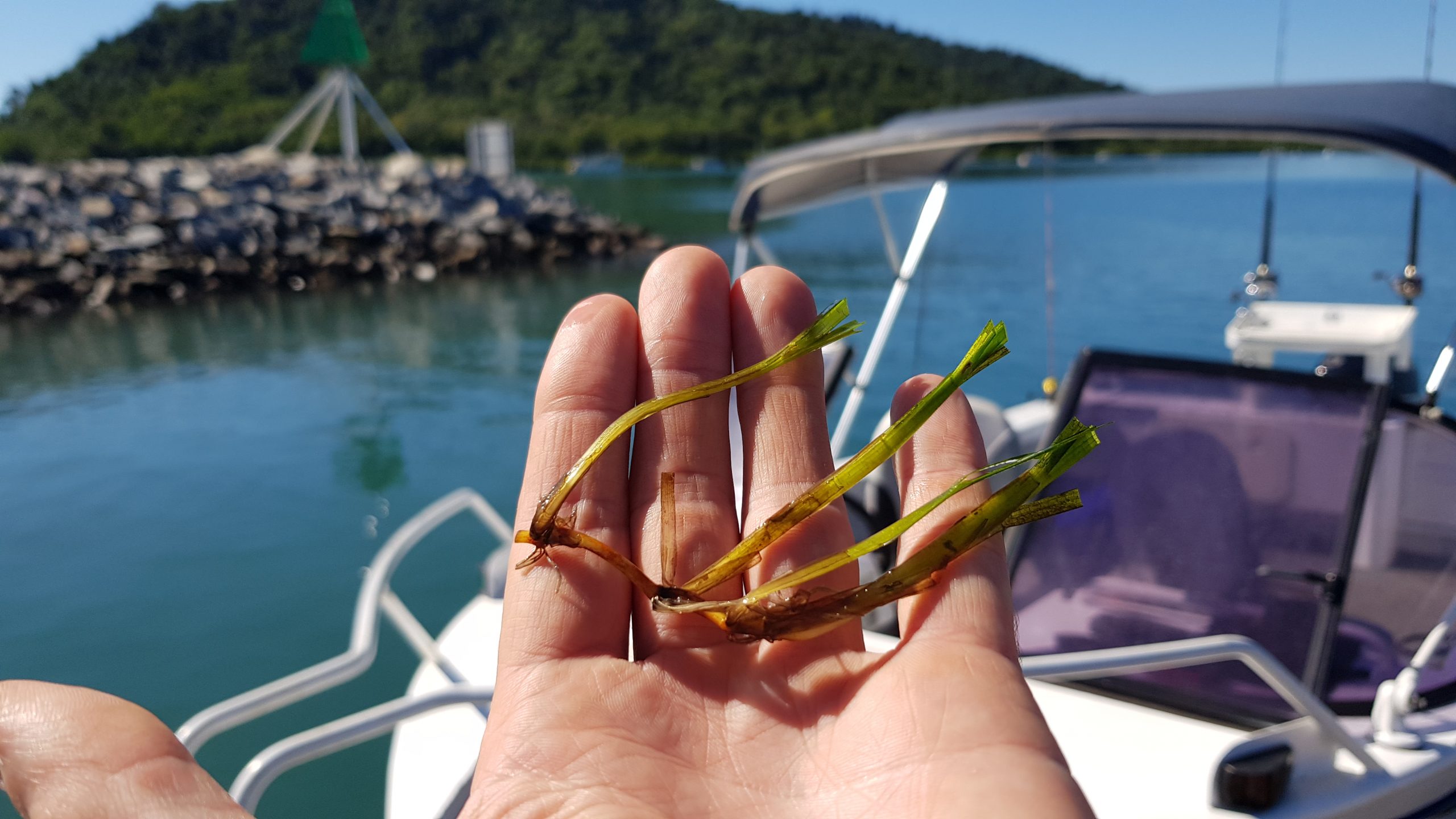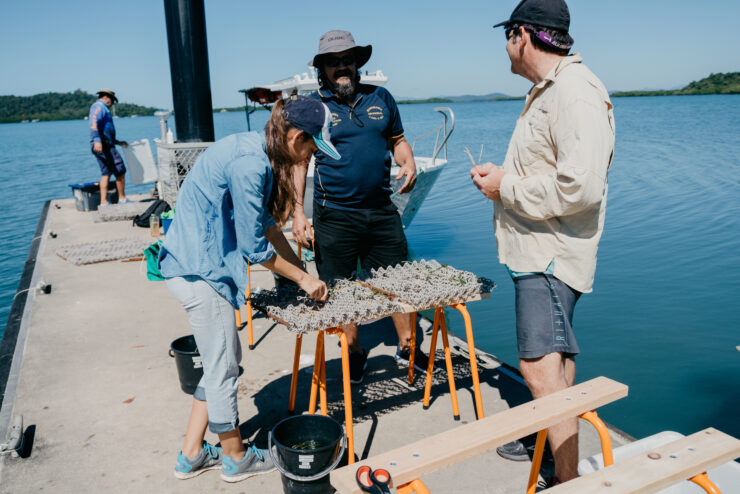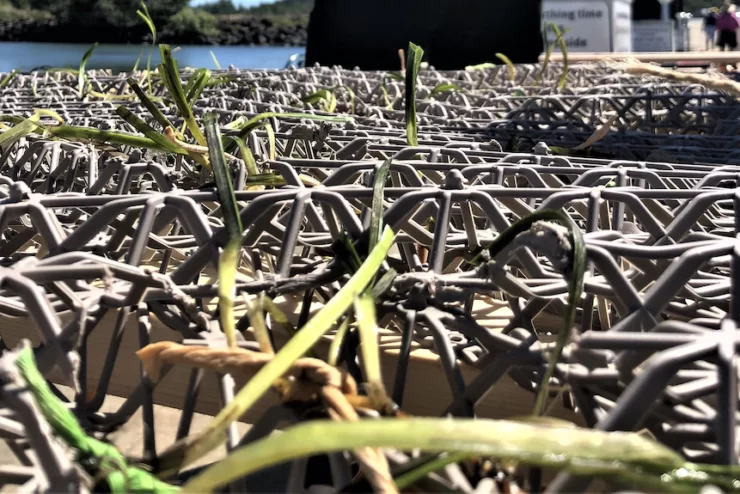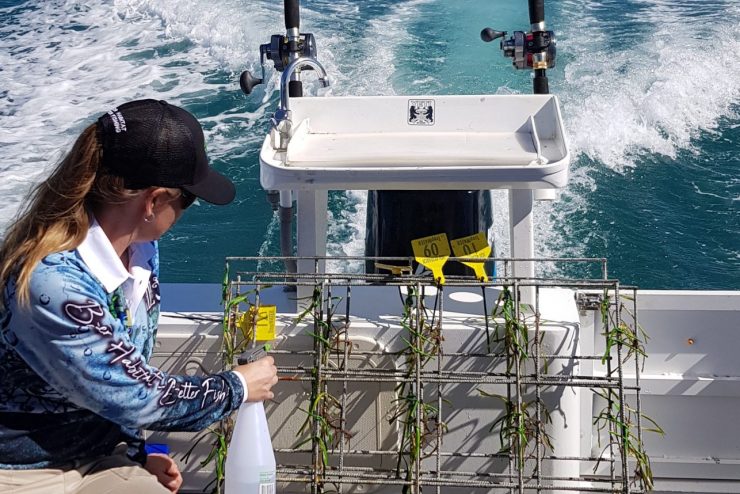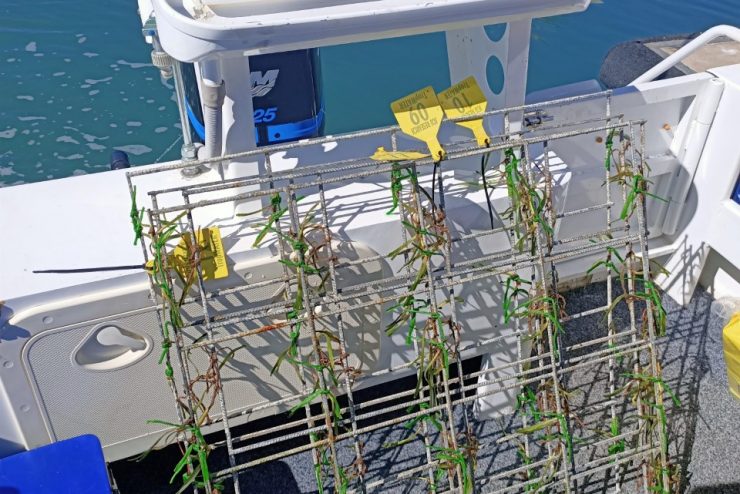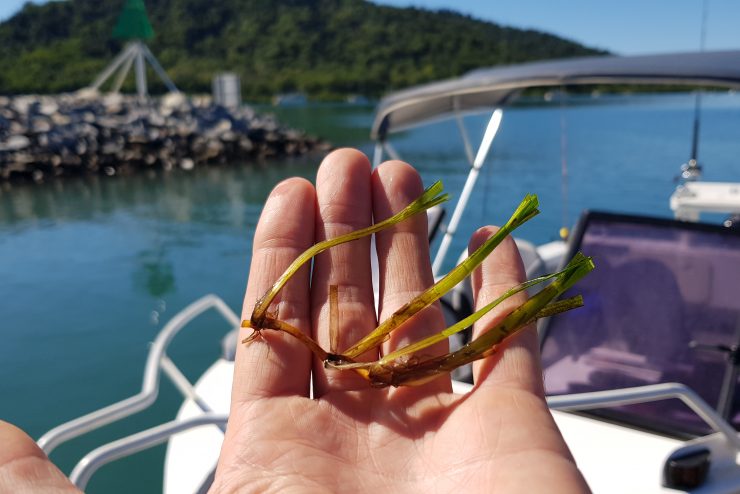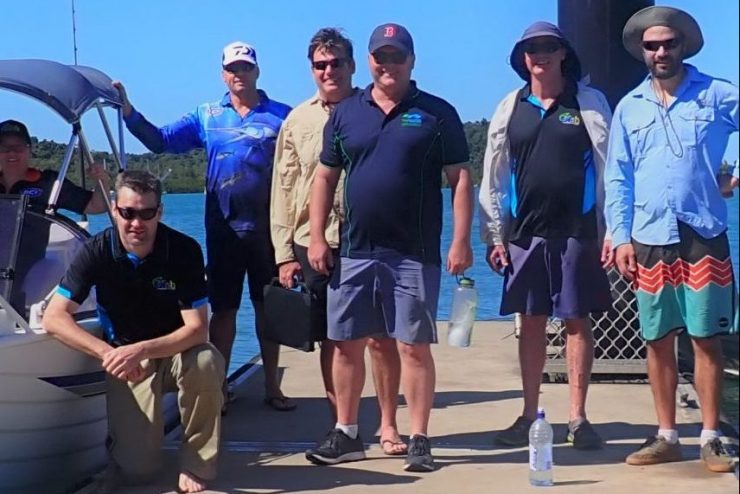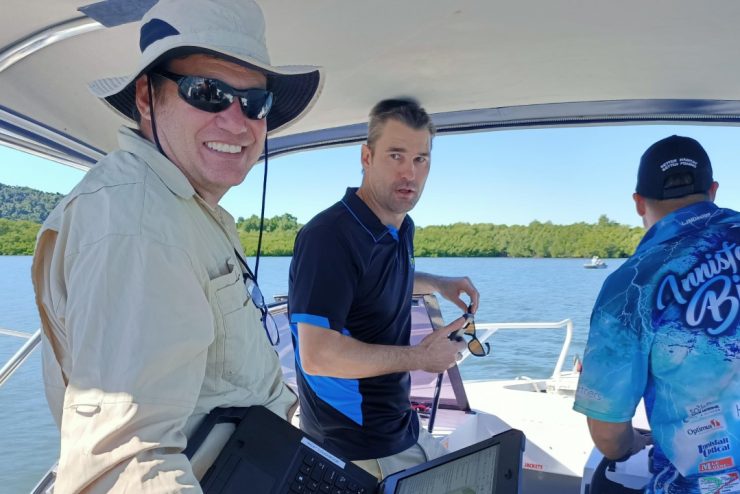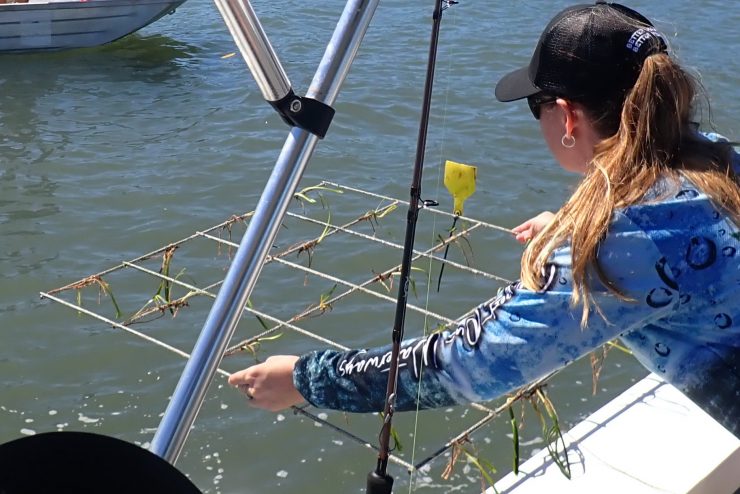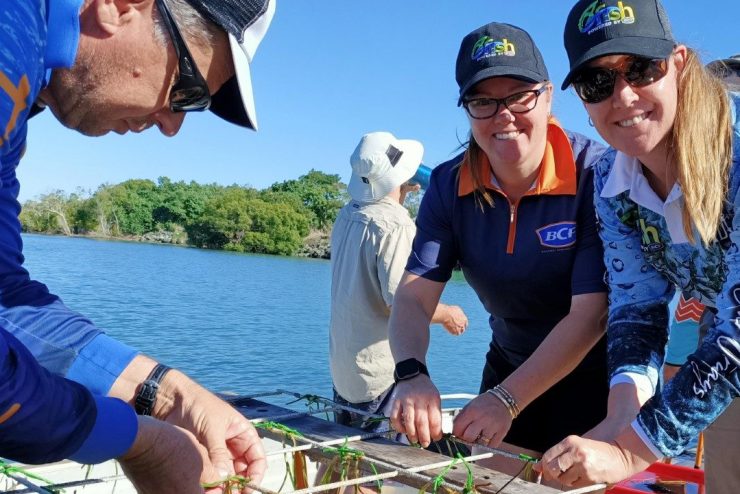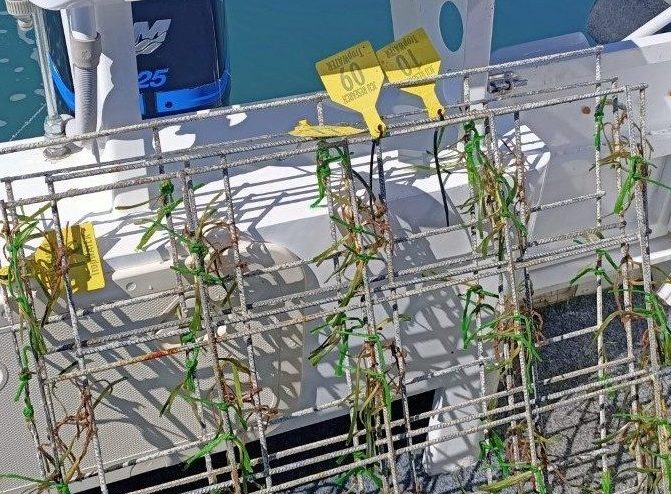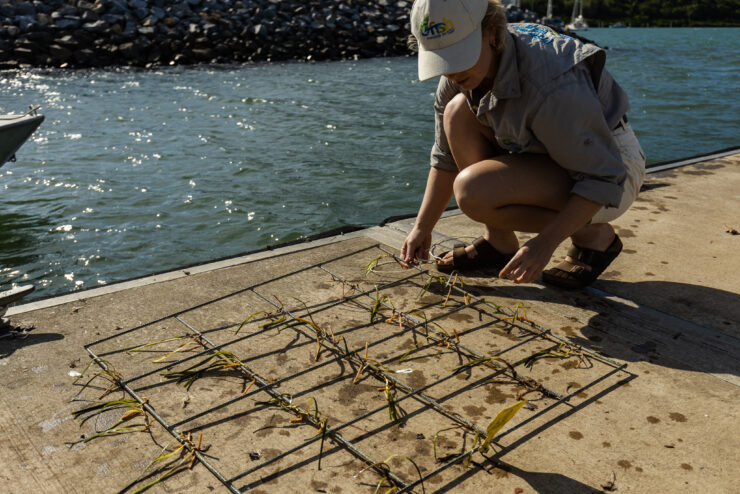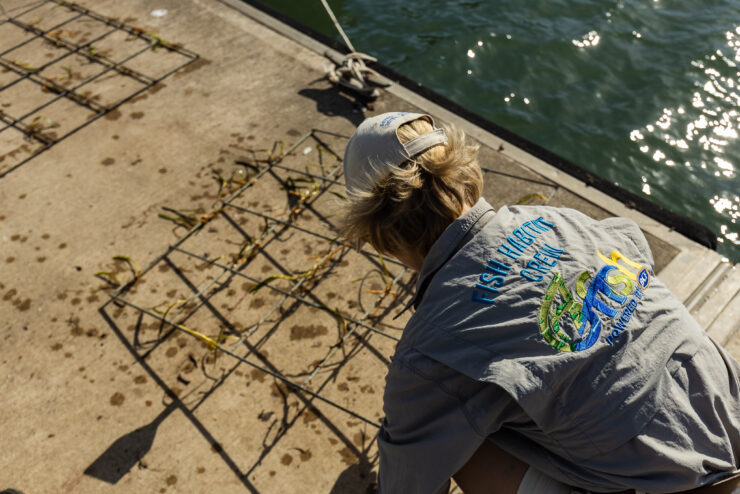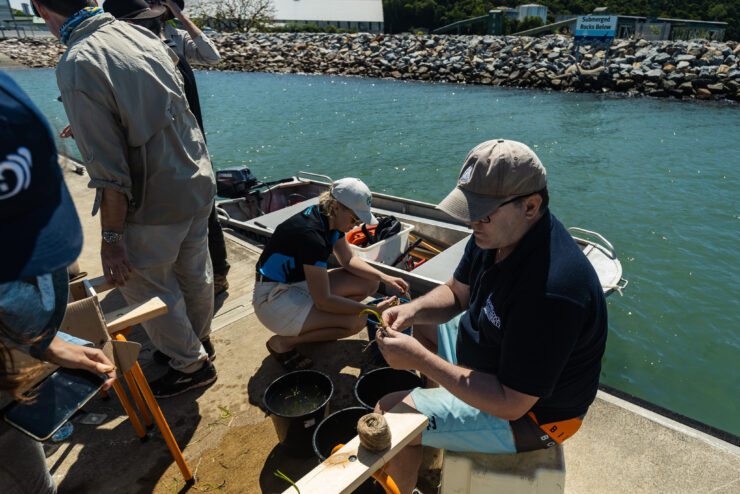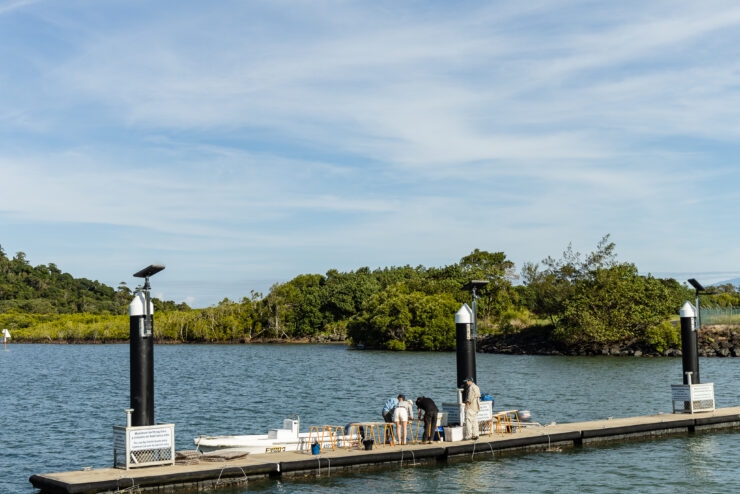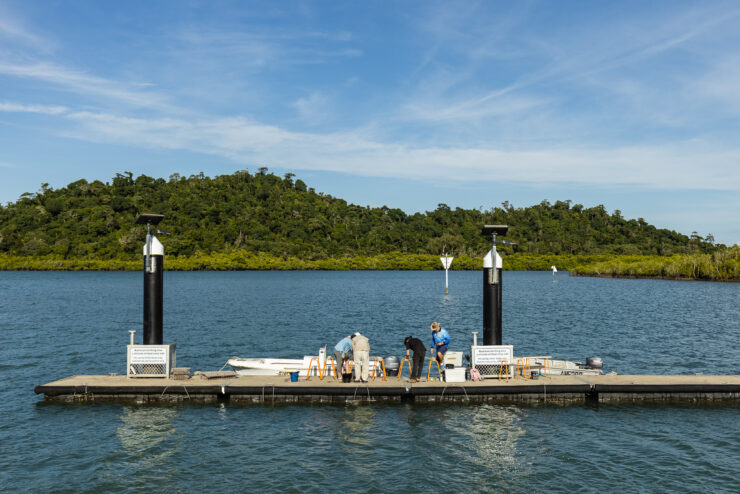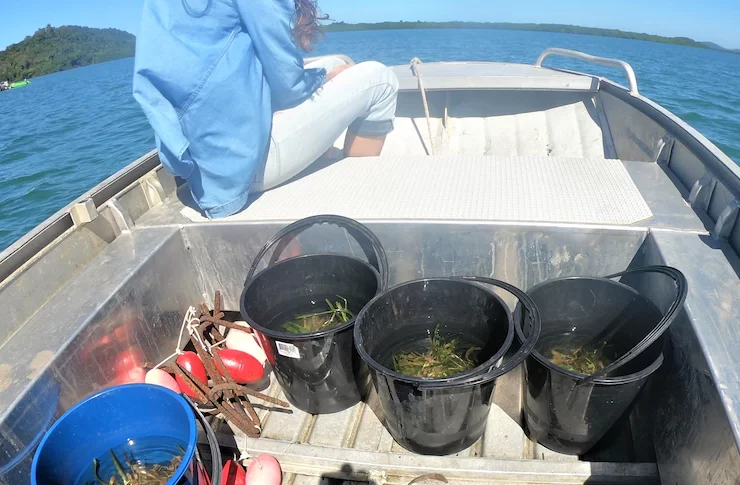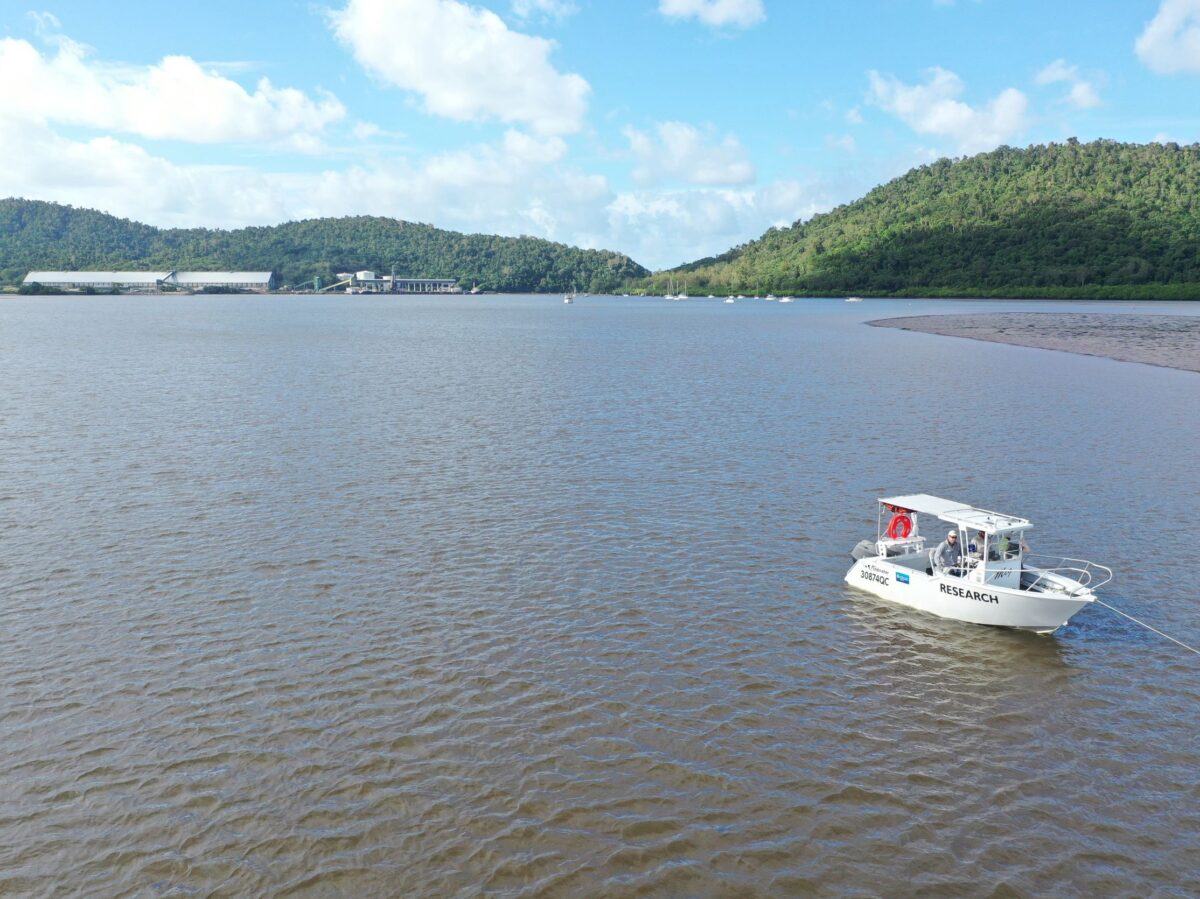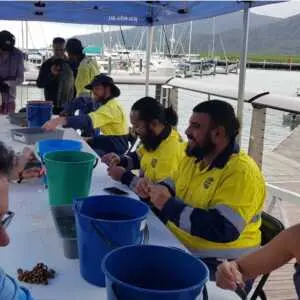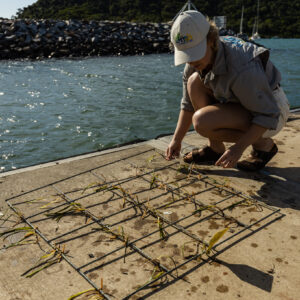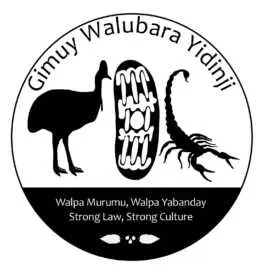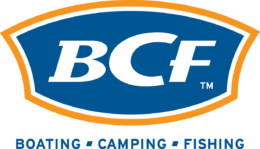Mourilyan Harbour, an estuary just south of Cairns, has been a focus site for scientists and OzFish volunteers over the last few months.
Here, the objective has been to bring back the seagrass meadows that were lost over a decade ago following damaging monsoon rainfall.
Seagrasses are an amazing nursery ground for some key recreational fish species in North Queensland including barramundi and mangrove jack.
They are also critical to healthy waterways and marine environments as they filter sediment and nutrients from coastal waters, are a food source for turtles and dugong, and store carbon in their sediments.
The meadows in Mourilyan Harbour were once thriving fish habitats full of juvenile prawns and fish but they have since been badly degraded.



